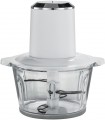Main bowl
The volume of the main bowl supplied with the device.
For more information about the main bowl, see "Capacities". And the amount of product that can be loaded into the device at a time directly depends on its volume. On the other hand, a capacious bowl has the appropriate dimensions and cost, and also puts forward increased requirements for engine power. Therefore, you should choose according to this parameter, taking into account real needs. And also you should consider that for stand mixers with a bowl, in most cases, the volume means the total size, and not the useful one. The bowl must be filled less than 2/3 during cooking (here it is already individual and you need to look at the instructions for the product).
Number of speeds
The number of speeds of rotation of the nozzles provided in the mixer / blender.
The presence of several speeds allows you to adjust the operating mode of the device to a particular situation. For example, a liquid omelet can be whipped at high speed, but it is better to choose a slower mode for kneading dough. The more speeds provided in the device, the more versatile it is, the more accurately it can be configured for a specific task. In simple household models, from 3 to 6 settings are usually provided, in the most advanced devices their number can reach two dozen.
Main bowl material
The substance that the jar of the countertop blender is made of (refer to "Device type"), or the material of the blender attachment (refer to "Nozzles"). The most widely used materials are:
—
Plastic. Plastic is a popular choice for blender jars due to its low cost, lightweight, and sufficient strength for kitchen use. Its transparency allows for easy monitoring of the product being blended. However, plastic is prone to scratching, which can cloud the bowl and reduce the device's appearance. Scratches can occur from everyday use or rough cleaning with abrasive products.
—
Glass. Glass blender jars are transparent and allow for easy monitoring of the contents. They are more resistant to scratches than plastic and do not lose transparency during use. Cleaning them harshly does not affect their transparency, and any cloudiness can be easily removed. However, glass is heavier, more expensive than plastic, and is more sensitive to impacts. A glass blender jar can break from a fall that plastic could withstand.
— Metal. Metal blender jars are durable and stylish, often surviving falls without damage. However, they are less convenient than plastic because their opaque walls make it difficult to observe the blending process. Metal is also more expensive than plastic, making it less commonly used, mainly in high-end devices.
Weight
The weight in this section can be confusing, since manufacturers do not indicate the mass of the main working tools of the equipment. Accordingly, the greater the number of accessories in the kit, the greater the total weight and this parameter will be necessary only at the time of purchase in order to understand how many extra kilograms you will have to carry home.

